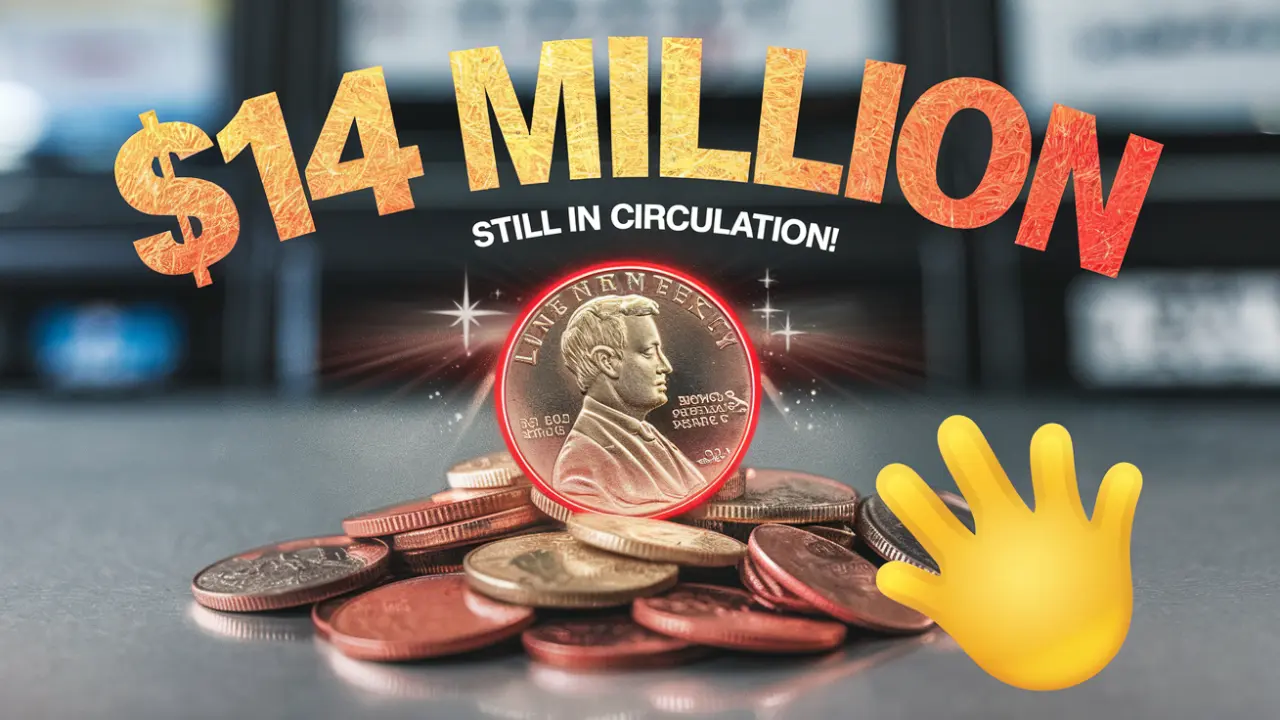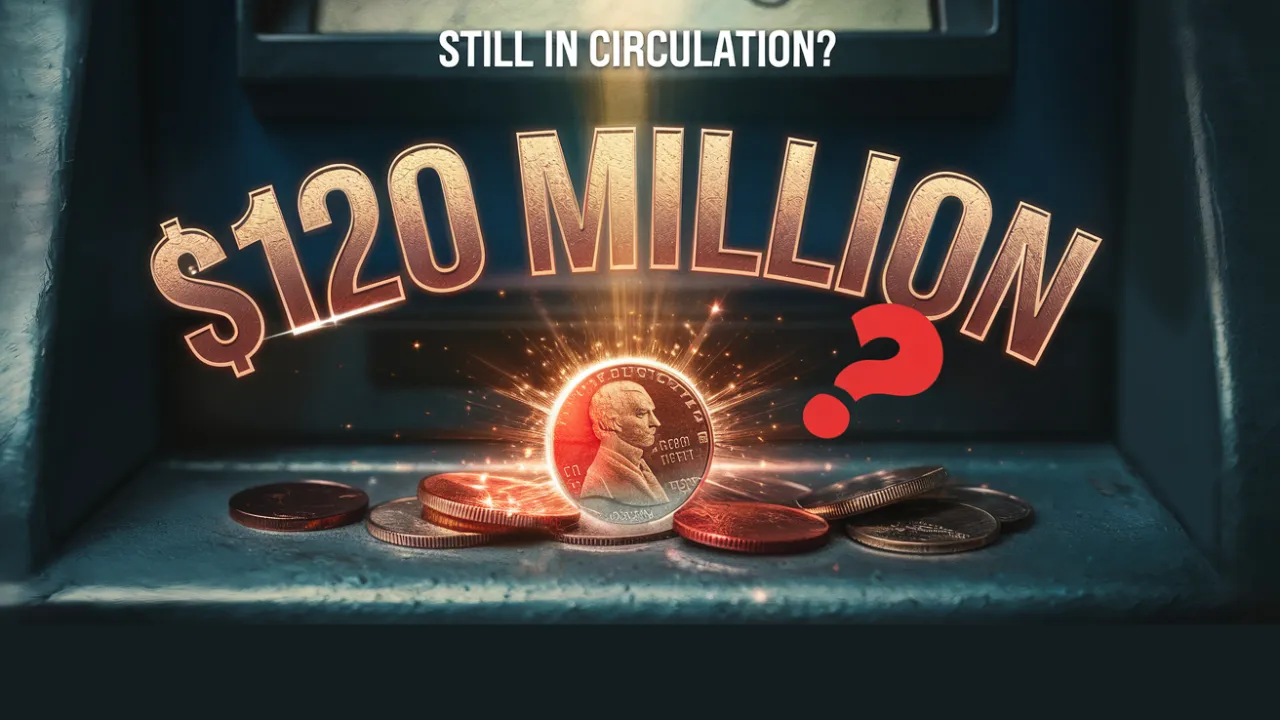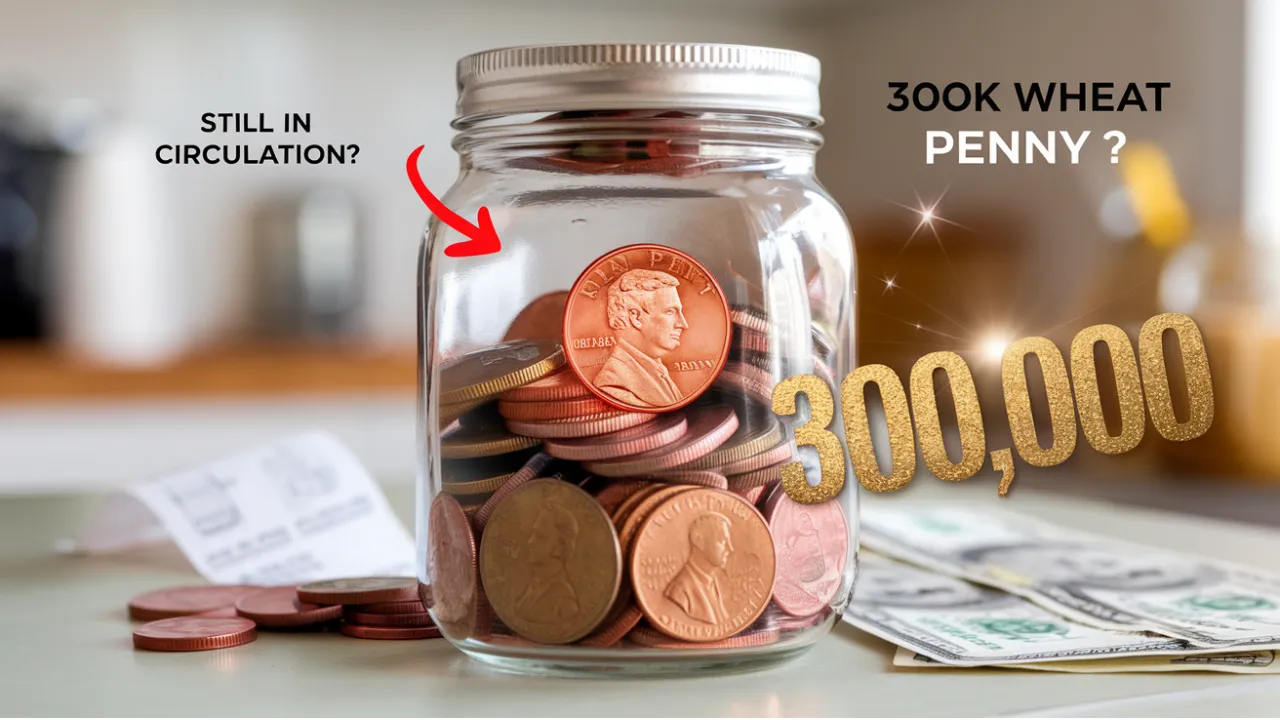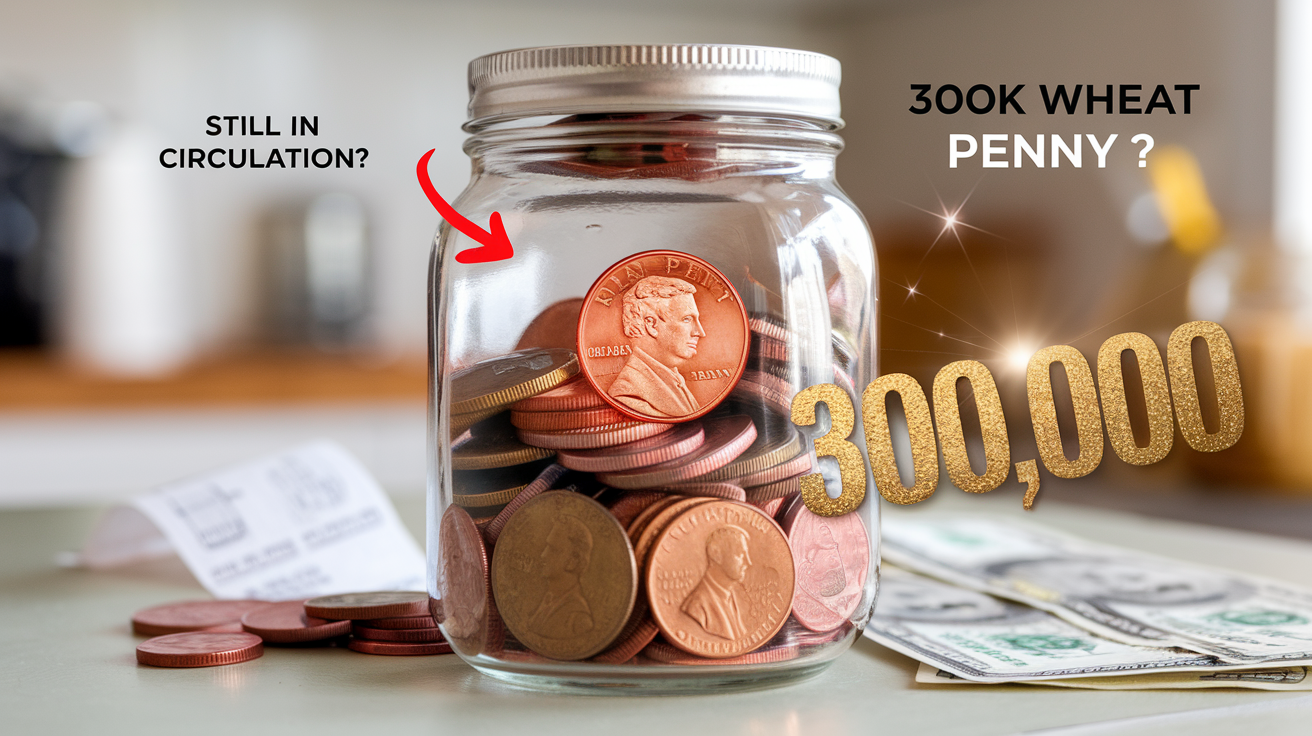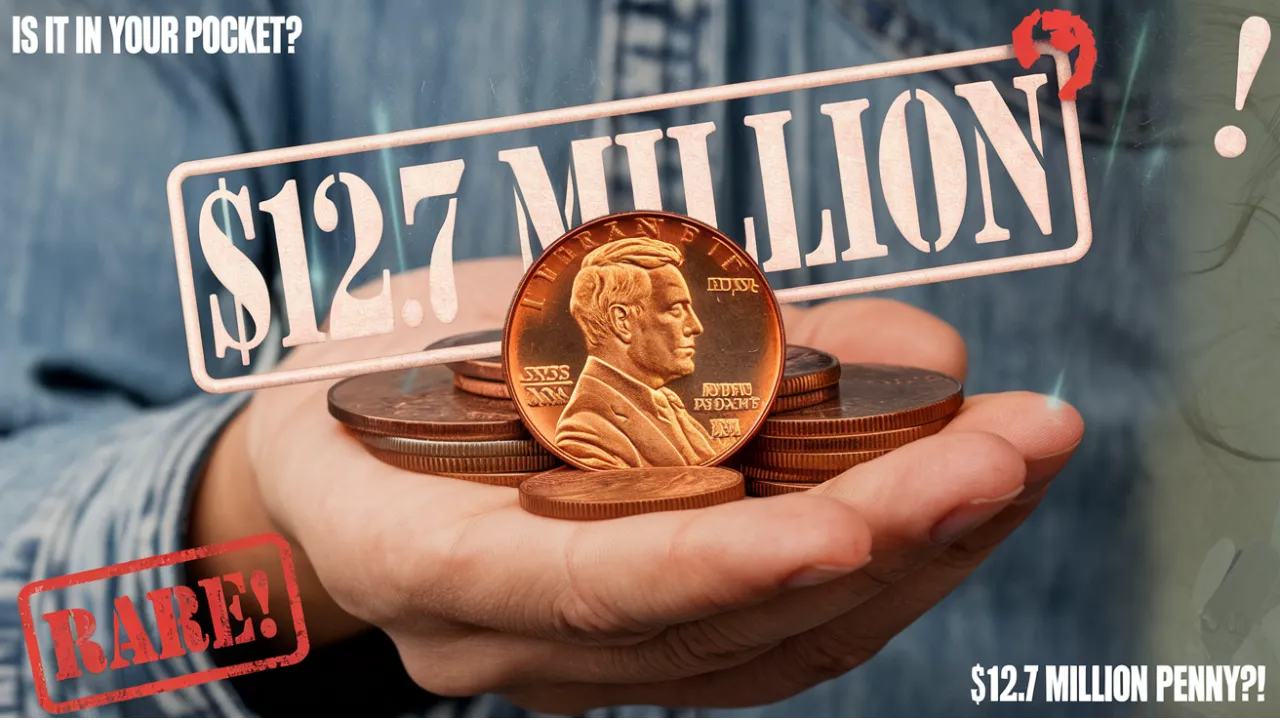The Lincoln Wheat Penny Valued at $14 Million: The Lincoln Wheat Penny is more than just a piece of small change—it’s an enduring symbol of American history and craftsmanship. First minted in 1909 to commemorate Abraham Lincoln’s 100th birthday, this iconic coin replaced the Indian Head penny and featured the first-ever portrait of a U.S. president on American currency. Its reverse design, adorned with wheat stalks, pays homage to the nation’s agricultural roots.
While millions of Lincoln Wheat Pennies were produced between 1909 and 1958, a select few have gained legendary status among collectors. A rare penny from this series recently garnered a staggering valuation of $14 million, sparking a renewed interest in these historic coins. In this article, we’ll dive into the history, valuation, and significance of the Lincoln Wheat Penny, as well as offer tips for collectors hoping to uncover their own numismatic treasure.
Key Details About the Lincoln Wheat Penny
| Feature | Details |
| Minting Years | 1909 to 1958 |
| Designer | Victor David Brenner |
| Obverse Design | Abraham Lincoln’s profile |
| Reverse Design | Wheat stalks symbolizing agriculture |
| Notable Variants | 1909-S VDB, 1943 Copper Penny, 1944-S Steel Penny |
| Most Valuable Coin | 1943 Copper Penny (valued at $51 million) |
| Factors Influencing Value | Rarity, minting errors, condition, historical significance |
| Preservation Tips | Professional storage, minimal handling, regular condition assessments |
| Current Market Trends | High demand for rare and unique coins |
The History Behind the Lincoln Wheat Penny
The Lincoln Wheat Penny was introduced at a pivotal time in U.S. history. The coin not only celebrated Lincoln’s legacy but also marked a significant shift in American coinage. For the first time, a real historical figure replaced symbolic imagery, ushering in a new era of design.
The reverse design, featuring two wheat stalks framing the words “ONE CENT,” was both simple and meaningful. It symbolized America’s agricultural economy and the values of hard work and prosperity. This design remained in circulation for nearly 50 years, making the Lincoln Wheat Penny a beloved and recognizable coin among Americans.
Why Are Some Lincoln Wheat Pennies Worth Millions?
While most Lincoln Wheat Pennies are worth only a few cents, certain factors can elevate their value to astronomical levels. Here’s what makes these coins so valuable:
1. Rarity
Coins with low mintage numbers or those produced under unique circumstances are inherently more valuable. For example, the 1909-S VDB penny had a limited run of just 484,000 coins, making it highly sought after.
One of the rarest Lincoln Wheat Pennies is the 1943 Copper Penny, which was accidentally struck on leftover bronze planchets during a period when pennies were supposed to be made from steel to conserve copper for the war effort. Only a handful of these coins exist today, with one selling for $1.7 million in 2010 and others valued at over $50 million.
2. Condition
A coin’s condition plays a significant role in its valuation. Coins graded as “mint state” (MS) with little to no wear are far more valuable than those in poor condition. For instance, an MS67RD grade 1909-S VDB penny recently sold for $168,000 due to its pristine condition and vibrant red tone.
3. Minting Errors
Mistakes during the production process can make a coin highly collectible. Examples include off-center strikes, double dies, and coins struck on the wrong planchet. These errors create unique pieces that stand out from the millions of perfectly minted coins.
The $14 Million Lincoln Wheat Penny
The $14 million valuation for a Lincoln Wheat Penny is a testament to how rarity, condition, and historical significance can combine to create extraordinary worth. This specific coin likely represents one of the rarest known varieties, possibly a high-grade 1943 Copper Penny or a unique minting error.
Collectors are drawn to these one-of-a-kind coins because they not only hold immense monetary value but also tell a story about the time and circumstances in which they were created. For investors and enthusiasts alike, owning such a piece is akin to holding a piece of history.
Notable Lincoln Wheat Penny Varieties
Certain Lincoln Wheat Pennies have achieved iconic status due to their rarity and unique characteristics. Here are some of the most famous varieties:
1. 1909-S VDB Penny
- Value: Up to $168,000
- Why It’s Special: This was the first Lincoln Wheat Penny ever minted, and the initials of its designer, Victor David Brenner (VDB), were included on the reverse. The San Francisco mint produced only 484,000 coins before the initials were removed, making it incredibly rare.
2. 1943 Copper Penny
- Value: Up to $51 million
- Why It’s Special: During World War II, pennies were supposed to be made from steel to save copper for the war effort. A few bronze planchets were accidentally used, creating one of the most valuable coins in the world.
3. 1944-S Steel Penny
- Value: Up to $408,000
- Why It’s Special: This coin was struck on leftover steel planchets from 1943 instead of the intended bronze. Its rarity and historical context make it a prized collectible.
4. 1943-D Bronze Penny
- Value: Up to $840,000
- Why It’s Special: Like the 1943 Copper Penny, this coin was a minting mistake, making it an incredibly rare and valuable find.
How to Identify and Preserve Rare Lincoln Wheat Pennies
If you suspect you have a valuable Lincoln Wheat Penny, follow these steps to confirm its worth and keep it in the best condition possible:
1. Check for Mint Marks
Mint marks (S for San Francisco, D for Denver) can indicate a coin’s rarity. Coins from these mints often had smaller production runs, making them more valuable.
2. Inspect the Condition
Examine the coin for wear, scratches, and discoloration. Coins with minimal wear and vibrant red tones (indicating the original copper luster) are worth more.
3. Look for Unique Features
Search for errors such as double-die obverses or coins struck on the wrong planchet. These anomalies often command premium prices.
4. Use Professional Grading Services
Send your coin to a trusted grading service like PCGS or NGC for authentication and grading. A professional evaluation can significantly increase a coin’s market value.
5. Store Coins Properly
Use coin holders or albums to protect your pennies from damage. Avoid cleaning them, as this can harm their surface and reduce their value.
FAQs About the Lincoln Wheat Penny
1. What is the most valuable Lincoln Wheat Penny?
The 1943 Copper Penny is the most valuable, with one example selling for $1.7 million and others valued at over $50 million.
2. How can I tell if my penny is rare?
Check for low mintage years, mint marks, and errors. Consulting a coin expert can help confirm rarity.
3. Should I clean my Lincoln Wheat Penny?
No, cleaning can damage the coin’s surface and drastically reduce its value.
4. Where can I sell rare pennies?
You can sell them through auction houses, coin dealers, or online marketplaces specializing in rare coins.
5. How do I start collecting Lincoln Wheat Pennies?
Start by researching key varieties and their values. Look for coins at flea markets, estate sales, or reputable coin dealers.
Final Thoughts
The Lincoln Wheat Penny represents more than just monetary value—it’s a tangible piece of American history. Rare pennies like the $14 million example continue to captivate collectors and investors, offering both financial rewards and historical insight.
Do you think you might have a valuable Lincoln Wheat Penny in your pocket or collection? Share your thoughts or discoveries in the comments below. And if you’re eager to learn more about the fascinating world of rare coins, be sure to check out related articles on numismatics and coin collecting tips!
